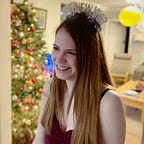Searching for Ripples in Spacetime with an Experiment that Spans a Continent
How LIGO uses laser interferometry to detect gravitational waves
The Laser Interferometer Gravitational-Wave Observatory (LIGO) was designed to detect the cosmic gravitational waves predicted by Einstein’s General Theory of Relativity to propagate from accelerated masses. The experiment is funded by the U.S. National Science Foundation (who have so far invested roughly $1.1 billion in its construction and development) and run by the California Institute of Technology (Caltech) and the Massachusetts Institute of Technology (MIT).
LIGO consists of two widely separated observatories, which use the technique of laser interferometry to measure tiny ripples in spacetime (the three dimensions of space plus the single dimension of time) predicted to be caused by gravitational waves. The two identical interferometers each have two 4 km arms at right angles to each other. When a laser beam enters an interferometer, it encounters a beamsplitter at the point where the two arms meet. This means that part of the beam is reflected down one of the arms, while the rest of the beam is transmitted along the other. Each arm contains a mirror at the far end, and after several trips up and down the arms, the beams are recombined. When the two light waves interact, the height of the waves are added, and the resulting wave is known as an “interference pattern” (hence the name “interfere-o-meter”).
One of the clearest examples of interference patterns in nature is the interaction of the ripples created when stones are thrown into water. If the peaks and troughs of the two waves perfectly line up, a larger wave is constructed, and “total constructive interference” occurs. If the peaks of one wave perfectly line up with the troughs of the other wave, the two waves cancel each other out, leading to “total destructive interference”. In reality, the peaks and troughs rarely align perfectly, leading to a range of different interference patterns.
LIGO is designed so that, when no gravitational waves are present, the light waves travel the same distance before recombining, resulting in destructive interference. Gravitational waves cause space to stretch in one direction and compress in a perpendicular direction. As a gravitational wave passes, the arms will become longer and shorter alternately. The light waves now shift in and out of alignment, leading to a flicker of light being produced as they recombine.
However, since the length of the arms can change by as little as 1/10,000th the width of a proton in the presence of a gravitational wave, it becomes challenging to detect this flicker amongst flickers caused by any other vibrations that move the mirrors. The detectors are affected by tiny vibrations up to thousands of miles away, including earthquakes and acoustic noise, for example due to traffic on nearby roads. It is for this reason that the location of the two interferometers is so important.
If the two observatories were situated close to each other, they would encounter the same vibrations at almost the same time, from both gravitational waves and local Earth-based sources, making it extremely difficult to distinguish between the two. To resolve this issue, the LIGO observatories are widely separated, with LIGO Hanford located in Washington state and LIGO Livingston situated 3002 km away near Baton Rouge, Louisiana. This allows one observatory to act as a filter for the results of the other, selecting only the vibrations that can be felt at both locations and are most likely due to gravitational waves.
When choosing these two locations, both the large size of the interferometers and their sensitivity to vibrations had to be considered. The requirement for such a vast area of empty space that still has access to the infrastructure needed to run it, combined with the need for isolation from earth tremors and human activity that creates disruptive vibrations, meant that the desert in eastern Washington and the humid pine forest in Louisiana were both suitable locations.
The Hanford Site is particularly interesting in that it is a decommissioned nuclear production complex, that was established in 1943 as part of the Manhattan Project. The last nuclear reactor ceased operation in 1987 and most of the reactors have been entombed, so that the radioactive materials are able to decay far away from people. However, investment from the federal government over several decades had resulted in a large population of highly skilled scientists in the area, allowing the site to branch out into other scientific facilities such as LIGO.
No detections of gravitational waves were made during LIGO’s initial phase of operations from 2002 to 2010. After an upgrade to incorporate more sophisticated instrumentation, the “Advanced LIGO” operation began in 2015 and the first observations of gravitational waves were made within the first two days. The observations matched predictions for the merging process of a pair of black holes. LIGO has since recorded many more gravitational wave events and, in 2017, the its founders were awarded the Nobel Prize in Physics. The third run of the experiment began on 1st April 2019.
Since the Universe was transparent to gravitational waves soon after the Big Bang, and gravitational waves can travel undisturbed by matter, they allow us to look back in time and observe the very early universe. By detecting them, LIGO has provided some of the most exciting results of recent years, but observing these tiny flickers would not have been possible without such carefully chosen locations on opposite sides of the continent.
References:
